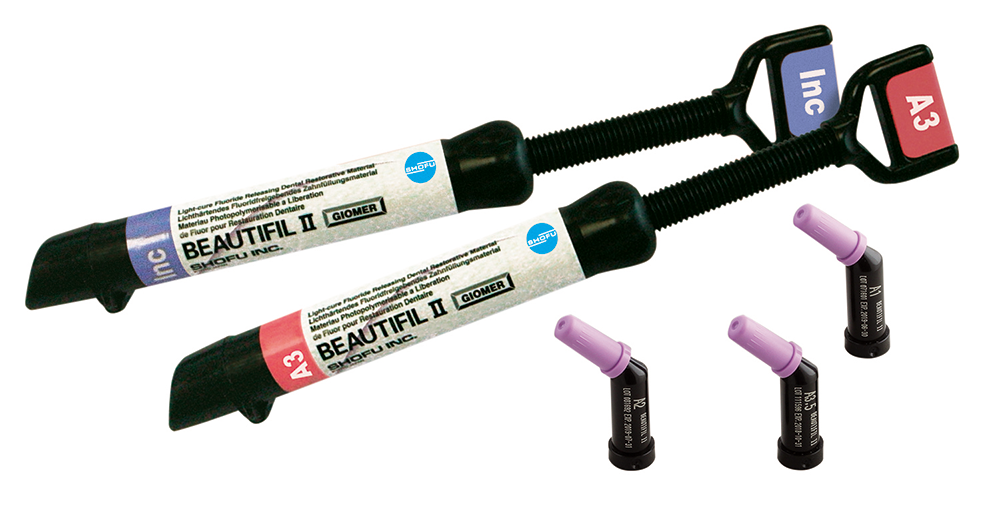Test Drive: Finding the Right Material Is Key to Composite Success
[Sponsored] Ankur Gupta, DDS, shares what he's looking for in a dental composite, and why Shofu's Beautifil II delivers for him and his patients.

Based on my best estimate, approximately 50 billion different types of dental composites are on the market to choose from. Open any reputable periodical (including the one that this article is printed in), and there is no doubt I’ll find a highly attractive full-page advertisement about yet another composite, one that will assuredly make all my dreams in life come true.
The problem is that I am like most dentists, and most dentists don’t really enjoy doing composite restorations. They are technique sensitive, time-consuming, and sometimes even after I pour a lot of effort into one of these procedures, the outcome is “just another composite restoration.”
For this reason, for most of my career, my composite of choice has always been the one that was easiest to handle. If it was creamy, nonsticky, kind of glossy, and easy to shape, that was the one I would order. I would perform the procedure to the best of my ability, using a product that didn’t annoy me, and in the end, I would be happy with the result.

Then I would encounter the patient at a grocery store or the library and ask them how they were doing, and they would respond, “You know that filling you did? Yeah? That one? The one you said looked great after you finished? Well, I can’t eat on that tooth.”
Or, on the occasions when I somehow dodged that particular heart sinker, I would see the patient in the office for their hygiene recall exam and notice they had a tooth with brown stain along the margins of a composite. My mind would quickly repeat, “Please don’t let that be one of my composites, please don’t let that be one of mine…”
I realized at that point whatever I was doing from a technique standpoint or whatever I was using from a materials standpoint was inadequate at providing me with maximum piece of mind.
I had a genuine interest in being the best possible dentist I could be, but something wasn’t allowing it. My problem was that I couldn’t identify what that something was.
Even though dental conferences do not have the same popularity that they once did, the one thing that they will continue to provide is a high concentration of really good dentists all in one place at the same time. Rather than simply enjoying their courses, I made it a point to ask the best restorative educators exactly what their technique was with composite restorations.
Their answer: bioactive composite, specifically materials containing Giomer Technology.
After I would stare at them with a stupid look for a few seconds, they would break the silence and explain: Bioactive Giomer restoratives are totally normal bonded and cured composite. It comes out of a compule or syringe just like any other composite. It can be packable or flowable just like any other composite. But the difference is what happens during the life of the composite after the dental procedure is complete and the patient is back at home, living life.
Here is what happens.
The fluoride ion is 1 of the 6 beneficial ions that release and recharge in the proprietary filler particles of Giomer Technology. So, the material will release and recharge fluoride long-term—reducing/eliminating secondary caries.
Together the 6 ions released and recharged at the surface of the composite inhibit plaque, neutralize acid, and reduce secondary decay. Minimizing the chance of pulpal sensitivity and brown stain lines caused by decay along the margins.
Even better, because the material behaves like other composites, it can be handled and polished just like my previous favorites.
The bioactive Giomer material is offered by Shofu, as their Beautifil line. They offer several types of restoratives, all with unique handling, flow, esthetic, and shrinkage characteristics. I use both Beautifil II and Beautifil II LS, for which the LS stands for “Lustrous Shine, Lasting Strength, and Low Shrink.” Both allow for the perfect sweet spot for composite restorations:
- Handles well
- Polishes beautifully
- Is packable
- Is bioactive
- Is wear resistant
- Is radiopaque
They also integrate seamlessly with the Beautifil Flow products, so I can apply a small layer of curable bioactive flowable material either as a liner or as a means of eliminating the possibility of voids.
Along with the magic of using a bioactive composite material, I have also learned a few technique modifications that have resulted in the most beautiful, asymptomatic, and long-lasting restorations. Here are a few of them:
First, use a fine diamond to bevel all margins, including the gingival margin of proximal boxes. This is best accomplished with a fine football bur for the occlusal margins and a fine long needle or pointed cone for the interproximal margins.
Next, use a selective-etch technique to create the most beautiful long-term marginal polish and to minimize the chances of an eventual brown line (Figure 1). Then bond, air dry, and cure like you normally would with your favorite high-rated bonding agent. Next, apply a small layer of flowable Beautifil as a curable liner (Figure 2).
Last, incrementally pack and cure Beautifil II, check occlusion, and polish (Figure 3).
Upon completing the restoration, sit back and reflect on the following: Your patient trusted that you would use the best available materials and the best-known techniques to give them the best chance of maintaining function and mitigating future disease and breakdown. That trust should never be taken lightly, and by following procedures shared by the best dentists and using Beautifil II and other bioactive materials, you can confidently deliver your best.